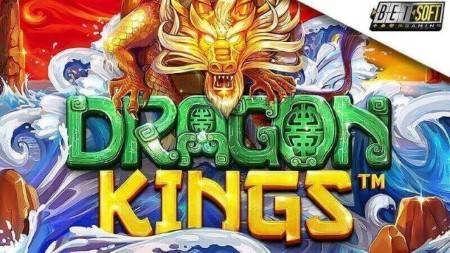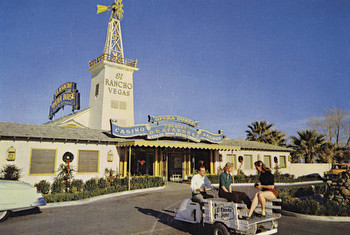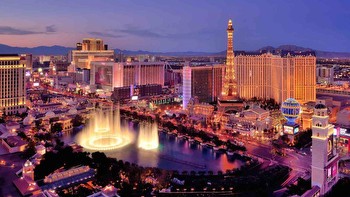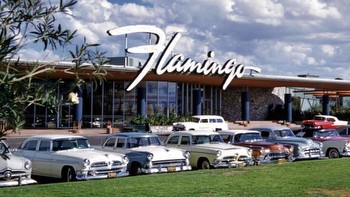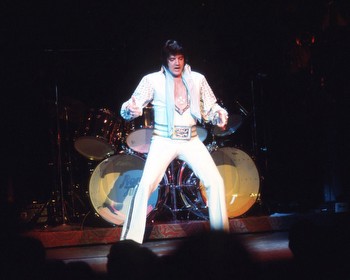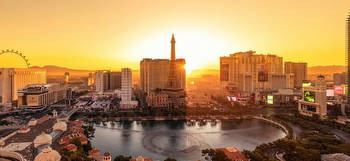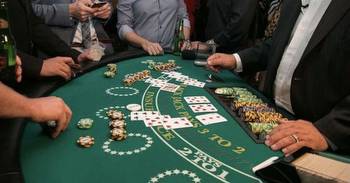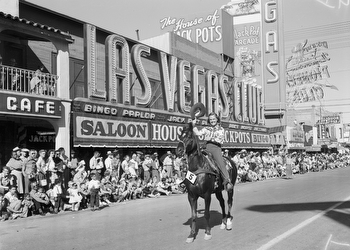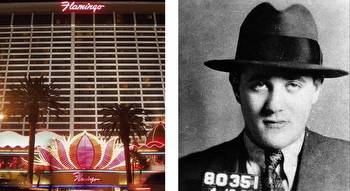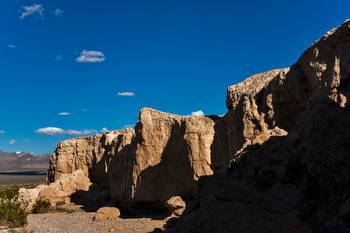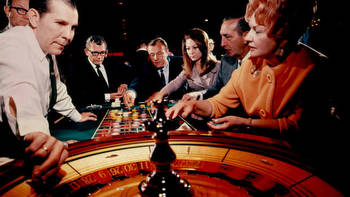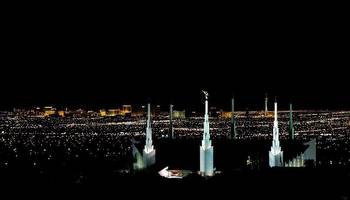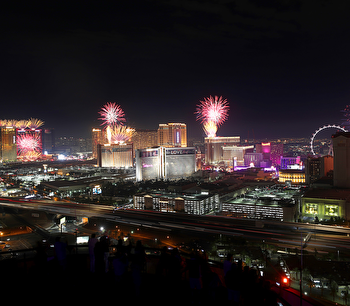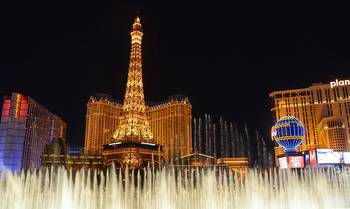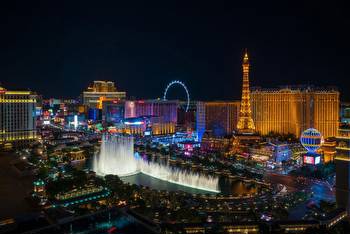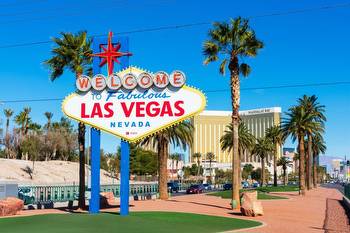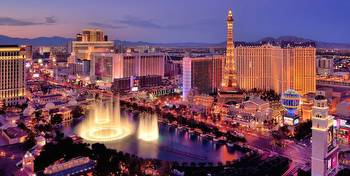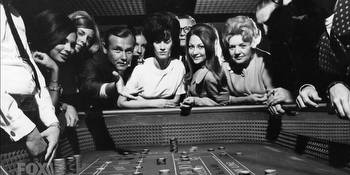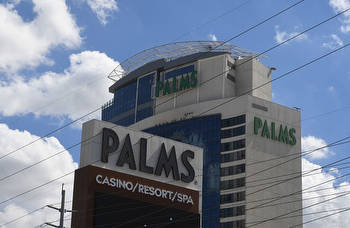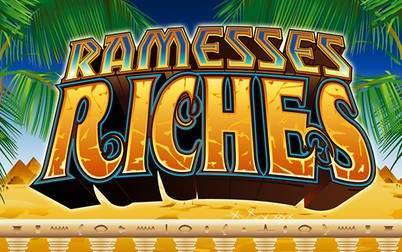How the Dazzling Las Vegas Strip Rose Up From the Desert
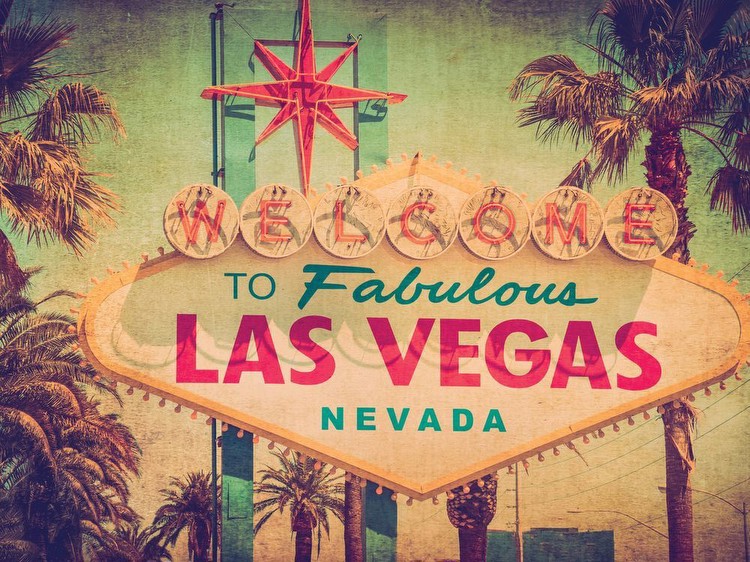
In 1829, a group of explorers led by Spanish merchant Antonio Armijo moved west toward Alta California through the arid Mojave Desert—the ancestral lands of the Southern Paiute people. A young scout named Rafael Rivera discovered a particularly verdant area full of grassland irrigated by a natural spring; this lushness soon inspired the place’s name: “The Meadows,” or “Las Vegas.” Though a couple dozen Mormon missionaries arrived here in 1855—largely failing to convert the Paiute population—the oasis remained something of a secret until four years later, when prospectors came to the valley. They found gold and silver, and the ensuing rush sparked a population boom, with miners arriving in droves to dig by day before chancing their new fortunes away in the saloons and bordellos at night.
At the turn of the 20th century, the oasis town became a rest area for wagon trains and a stop on the new railroad connecting Los Angeles and Salt Lake City. This railroad was completed in 1905, and in 1911 Las Vegas was incorporated as a U.S. city. Though gambling was outlawed at first, clandestine casinos opened for business. Then, in 1931, everything changed when Nevada became the first state to legalize gambling, as well as the first to offer quickie divorces. From then on, the Silver State was synonymous with American excess. Around the same time, construction began on the Hoover Dam, which would provide water and power to the valley. This monumental project brought an influx of construction workers to the city of Las Vegas, and local entrepreneurs wasted no time in opening casinos to relieve these men of their spare cash. This characteristically American mix of grit, graft and speculation turned a dusty desert road into the entertainment capital of the world, a 4.2-mile stretch that would eventually become known as the Las Vegas Strip.
Perhaps unsurprisingly, the Strip attracted shady characters right from the start. In 1939, a cop named Guy McAfee arrived in Vegas after fleeing Los Angeles under accusations of corruption. He quickly put down roots, buying and developing the Pair O’ Dice Club and several others. Inspired by his beloved Sunset Strip in L.A., McAfee also bestowed the indelible name upon Vegas’ main drag. Soon after, in 1941, Californian businessman Thomas Hull founded the area’s first luxury resort, El Rancho Vegas, with blossoming gardens and a capacious swimming pool. This new adult playground caught the attention of the New York mob, who saw opportunities in both legal gambling and in less-legal money skimming. In 1945, the infamous gangster Bugsy Siegel bullied his way into development of the luxury Flamingo resort, creating a template for the super-casinos to come. Until then, Vegas casinos typically sported rustic Wild West themes, but Siegel ushered in an era of unbridled opulence.
Toward the end of World War II, piano sensation Liberace pioneered the concept of a residency, where venues dedicate their stages exclusively to individual superstars, often for years at a time. In their own subsequent residencies at the Copa Room at the Sands, Frank Sinatra and the Rat Pack helped establish the swanky after-dark revelry for which Vegas has become notorious. Starting in the late 1960s, Elvis Presley was a Vegas fixture. With round-the-clock musicians, magicians, comedians, blue men and white Bengal tigers, the Strip became the premier global destination not just for indecorous gambling, but also for family-friendly entertainment.
In the 1990s, Vegas developers began thinking even bigger, and the arrival of the great pyramid of the Luxor Hotel and Casino in 1993 began an ostentatious decade of international icons arriving in reduced size along the Strip as new casinos sought to become the next big thing. Where else can you find the Eiffel Tower, Venetian canals and New York skyscrapers all within walking distance? Yet perhaps nothing catches the eye quite like the show-stopping, cutting-edge tech of the Sphere, the largest spherical structure on the planet, which opened as a concert venue in Vegas last year. Such grandeur, often with a touch of gaudiness, defines the Strip.
It’s not just gamblers taking risks in Vegas. The Strip has been a global capital of extreme sports ever since December 1967, when a little-known stunt artist named Evel Knievel tried to jump the fountains of the newly opened Caesars Palace, coming up short and crashing to the tune of several broken bones and a 29-day coma. The city is also recognized as the undisputed home of boxing since the iconic slugfest between George Foreman and Ron Lyle at Caesars Palace in 1976. In more recent thrills, last November the eyes of millions were fixed on the city for the inaugural Las Vegas Grand Prix. Formula 1’s first-ever after-dark race in Sin City turned the area into a high-velocity street circuit, with the Strip naturally taking center stage as the blistering home stretch.
Ever seductive, the Strip continues to tempt visitors with its unmatched indulgences: Win a fortune on black, fall in love by the fountains of the Bellagio, get married by Elvis—or snag a quickie divorce. Tastes may change, but it’s the thrill of the ephemeral that makes Vegas Vegas.
Upping the Ante
An incomplete collection of some of the straight-up weirdest gambles in history
By Teddy Brokaw
Dice Hard
Roman Emperor Nero gambled extravagantly during his first-century A.D. reign, often in games with four dice. Per Suetonius, Nero would wager 400,000 sesterces (roughly $1.6 million today) on each pip of a throw—risking a loss of up to 9.6 million sesterces.
King Swap
During one card game around the turn of the 16th century, Henry VII challenged his courtier Juan de Lepe: If the Spaniard could beat his hand, he’d get to be king of England for a day. De Lepe prevailed and throughout the realm was lauded by his newfound, and very temporary, subjects.
Kidding Around
While playing cards at an English tavern in 1735, Henry and John Trotter bet the child of James and Elizabeth Leesh against a four-shilling wager. When the bet was lost, the Leeshes handed over the kid, whose fate we do not know.
Jiminy Cricket!
Cricket fighting has been a popular gamble in China for over 1,000 years. During the Song dynasty, Chancellor Jia Sidao gambled so hard that he neglected to prevent a Mongol invasion in 1267; the dynasty fell.
AlphaMail
In the mid-1970s, FedEx was deep in debt, so founder Fred Smith chanced the company’s last $5,000 in a Vegas blackjack game. He won $27,000, buying FedEx valuable time with creditors, enabling it to grow into the $63 billion company it is today.







